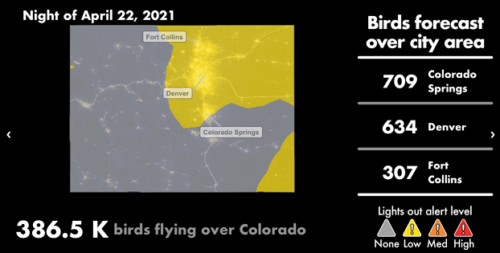


6 Exposure to light pollution across migratory routes can even lead to phenological shifts, whereby birds may differentially depart or arrive to areas because of light pollution exposure. 5 We also know that sky glow has been increasing by up to 10% per year in North America. 4 At the macroscale, birds are attracted to the sky glow from illuminated urban or suburban areas and can be drawn into heavily urbanized areas, disrupting and even reshaping their migratory routes. The effects of light pollution can impact migratory birds on a variety of spatial scales. A transdisciplinary approach is needed to begin to address this large, societal issue, as we cannot solve it through a biological lens alone. I am a Convergence Coordinator for a National Science Foundation (NSF) funded project through NSF’s Growing Convergence Research program – a team of ecologists, political scientists, and sociologists at Colorado State University and the University of Oklahoma working toward sustainable night skies. Coordinating Lights Out campaigns and partnerships across cities can be difficult, as artificial lights at night have become integral in our society due to perceived safety, function, and aesthetics. 2 The most direct way that artificial light threatens both migrant and resident birds is attraction to light sources, often resulting in disorientation and, at times, collisions with lit structures. In North America, 70% of birds are migratory and, of those that migrate, a whopping 80% do so under the cover of darkness. However, during this awe-inspiring journey, birds face many human-caused threats – one being artificial light at night. Thanks to these journeys, spring is characterized by the return of birdsong and the delight of seeing bright yellow, blue, or red songbirds visit our cities and neighborhoods. In honor of World Migratory Bird Day on May 13, Carolyn Burt, a scientist with the National Science Foundation’s Convergence Research program, provides us some insight on the importance of turning our lights out at night for migrating birds.īirds migrate, sometimes across hemispheres, every spring and fall.


 0 kommentar(er)
0 kommentar(er)
